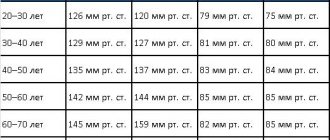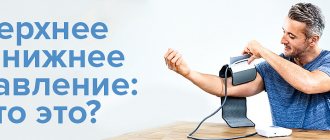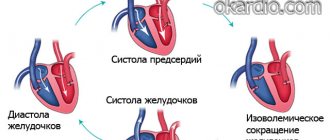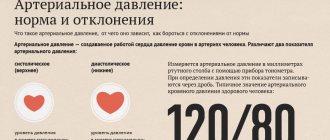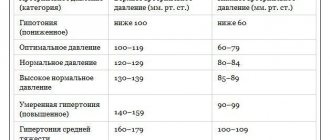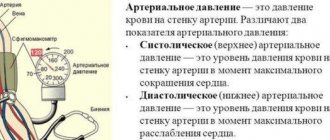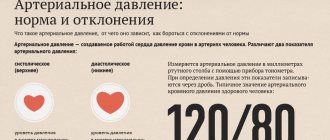Read in this article:
- What is blood pressure?
- What pressure is called upper and lower?
- What does syastolic blood pressure mean?
- What you need to know about diastolic pressure?
- Why does the lower pressure change?
- Pulse pressure: what is considered normal?
- How to measure blood pressure correctly?
- Why is it important to use a blood pressure monitor regularly?
Blood pressure is one of the objective indicators that allows us to assess the state of human health and the quality of work of internal organs. Thanks to modern tonometers, anyone can find out their blood pressure in a few minutes. However, you need not only to be able to use such devices, but also to understand what the numbers on the monitor mean.
What is blood pressure?
Tonometers record the blood pressure on the walls of the arteries, which is why it is called arterial pressure. In other words, the indicator means how much the level of fluid pressure in the circulatory system is higher than atmospheric pressure.
If we describe the whole process in simple words, it will look like this:
- The heart muscle contracts;
- The aortic valve closes;
- The heart receives highly oxygenated blood from the lungs;
- The following reduction occurs;
- Blood moves to all organs.
The entire circulatory system is involved in the formation of blood pressure, including the blood itself, which supplies tissues with oxygen, removes waste products, and provides thermoregulation. BP shows how well these functions are performed.
Blood circulation in humans
Arteries
- These are vessels that carry blood from the heart.
They have a thick muscle layer. Veins
are vessels that carry blood to the heart. They have a thin muscle layer and valves.
Capillaries
- These are single-layer vessels in which the exchange of substances between blood and tissues occurs.
Arterial blood
- This is blood saturated with oxygen.
Venous blood
is saturated with carbon dioxide. In the pulmonary circulation, venous blood flows through the arteries, and arterial blood flows through the veins.
The human heart has four chambers
, consists of two atria and two ventricles (in the left half of the heart there is arterial blood, in the right - venous).
The leaflet valves are located between the ventricles and atria
, and between the arteries and ventricles -
semilunar.
The valves prevent blood from flowing backwards (from the ventricle to the atrium, from the aorta to the ventricle).
The thickest wall is at the left ventricle, because it pushes blood through the systemic circulation. When the left ventricle contracts, a pulse wave is created, as well as maximum blood pressure.
Blood pressure:
in the arteries the largest, in the capillaries the average, in the veins the smallest.
Blood speed:
the highest in the arteries, the smallest in the capillaries, the average in the veins.
Big circle
blood circulation: from the left ventricle, arterial blood flows through the arteries to all organs of the body. In the capillaries of the large circle, gas exchange occurs: oxygen passes from the blood into the tissues, and carbon dioxide passes from the tissues into the blood. The blood becomes venous, flows through the vena cava into the right atrium, and from there into the right ventricle.
Small circle:
From the right ventricle, venous blood flows through the pulmonary arteries to the lungs. Gas exchange occurs in the capillaries of the lungs: carbon dioxide passes from the blood into the air, and oxygen from the air into the blood, the blood becomes arterial and flows through the pulmonary veins into the left atrium, and from there into the left ventricle.
You can also read
IF THE INFORMATION IS NOT IN THE MAIN SUMMARY, THEN IT IS IN THE DETAILED SUMMARY:
Blood vessels, Blood pressure and velocity, Heart
ASSIGNMENTS OF PART 2 OF THE USE ON THIS TOPIC
Part 1 tasks
Choose one, the most correct option. Why can't blood get from the aorta to the left ventricle of the heart?
1) the ventricle contracts with great force and creates high pressure 2) the semilunar valves fill with blood and close tightly 3) the leaflet valves are pressed against the walls of the aorta 4) the leaflet valves are closed and the semilunar valves are open
Answer
2
Choose one, the most correct option. Blood enters the pulmonary circulation from the right ventricle through
1) pulmonary veins 2) pulmonary arteries 3) carotid arteries 4) aorta
Answer
2
Choose one, the most correct option. Arterial blood flows through the human body
1) renal veins 2) pulmonary veins 3) vena cava 4) pulmonary arteries
Answer
2
Choose one, the most correct option. In mammals, blood is enriched with oxygen in
1) arteries of the pulmonary circulation 2) capillaries of the systemic circle 3) arteries of the systemic circle 4) capillaries of the systemic circle
Answer
4
Choose one, the most correct option. The vena cava in the human body drains into
1) left atrium 2) right ventricle 3) left ventricle 4) right atrium
Answer
4
Choose one, the most correct option. Valves prevent blood from flowing back from the pulmonary artery and aorta into the ventricles.
1) tricuspid 2) venous 3) bicuspid 4) semilunar
Answer
4
Choose one, the most correct answer. Indicate the sequence of processes occurring in the heart during one full cycle of its work.
1) contraction of the atria and relaxation of the ventricles, relaxation of the atria and contraction of the ventricles, general pause 2) contraction of the atria and ventricles, relaxation of the atria and ventricles, general pause 3) contraction of the right ventricle and atrium, relaxation of the left ventricle and atrium, general pause 4) contraction of the left atrium and right ventricle, general pause, contraction of the right atrium and right ventricle
Answer
1
ARTERIES Choose three correct answers out of six and write down the numbers under which they are indicated. What features are characteristic of human arteries?
A) has a thin muscle layer B) has valves C) carries blood from the heart D) carries blood to the heart E) has elastic elastic walls E) withstands high blood pressure
Answer
112122
ARTERIES - VEINS 1. Establish a correspondence between the signs and blood vessels: 1) vein 2) artery. Write numbers 1 and 2 in the order corresponding to the letters.
A) has a thin muscle layer B) has valves C) carries blood from the heart D) carries blood to the heart E) has elastic elastic walls E) withstands high blood pressure
Answer
112122
2. Establish a correspondence between the structural features and functions and types of vessels: 1) artery, 2) vein. Write numbers 1 and 2 in the order corresponding to the letters.
A) has valves B) the wall contains fewer muscle fibers C) carries blood from the heart D) carries venous blood in the pulmonary circulation D) communicates with the right atrium E) carries out blood flow due to contraction of skeletal muscles
Answer
221122
3. Establish a correspondence between the characteristics and types of blood vessels: 1) arteries, 2) veins. Write numbers 1 and 2 in the order corresponding to the letters.
A) carry blood from the heart B) contain valves throughout C) have a thicker muscle layer in the wall D) can collapse E) resist high pressure E) carry arterial blood in the pulmonary circulation
Answer
121212
4. Establish a correspondence between the sign of human blood vessels and their type: 1) arteries, 2) veins. Write numbers 1 and 2 in the order corresponding to the letters.
A) depart from the ventricles of the heart B) have semilunar valves along their entire length C) carry blood to the heart D) have the fastest blood flow E) have thin and elastic walls, an underdeveloped muscle layer
Answer
12212
ARTERIES - VEINS - CAPILLARIES 1. Establish a correspondence between the features of blood vessels and their types: 1) artery, 2) vein, 3) capillary. Write numbers 1-3 in the order corresponding to the letters.
A) the wall consists of one layer of cells B) endothelial cells fit tightly to each other, forming smooth walls C) the walls have valves D) the walls are thin, elastic, contain muscles E) has the smallest diameter
Answer
31223
2. Establish a correspondence between the characteristic and the blood vessels: 1) arteries, 2) veins, 3) capillaries. Write numbers 1-3 in the order corresponding to the letters.
A) carry out metabolic processes between blood and tissues B) have dense and elastic vascular walls C) blood flows through them to the heart D) have thin single-layer walls E) have semilunar valves throughout their entire length E) have the lowest blood flow rate
Answer
312323
VEINS Select three options. Veins are blood vessels through which blood flows
1) from the heart 2) to the heart 3) under greater pressure than in the arteries 4) under less pressure than in the arteries 5) faster than in the capillaries 6) slower than in the capillaries
Answer
245
VEINS IN EXC. FROM ARTERIES 1. Choose three correct answers out of six and write down the numbers under which they are indicated. Veins, as opposed to arteries
1) have valves in their walls 2) can collapse 3) have walls made of a single layer of cells 4) carry blood from organs to the heart 5) withstand high blood pressure 6) always carry blood that is not saturated with oxygen
Answer
124
2. Choose three correct answers out of six and write down the numbers under which they are indicated. Veins, unlike arteries, are characterized by
1) leaflet valves 2) transport of blood to the heart 3) semilunar valves 4) high blood pressure 5) thin muscle layer 6) fast blood flow
Answer
235
VENOUS BLOOD Choose three correct answers out of six and write down the numbers under which they are indicated. Elements of the human circulatory system containing venous blood are
1) pulmonary artery 2) aorta 3) vena cava 4) right atrium and right ventricle 5) left atrium and left ventricle 6) pulmonary veins
Answer
134
ARTERIAL - VENOUS 1. Establish a correspondence between the type of human blood vessels and the type of blood they contain: 1) arterial, 2) venous
A) pulmonary arteries B) veins of the pulmonary circulation C) aorta and arteries of the systemic circulation D) superior and inferior vena cava
Answer
2112
2. Establish a correspondence between a vessel of the human circulatory system and the type of blood that flows through it: 1) arterial, 2) venous. Write numbers 1 and 2 in the order corresponding to the letters.
A) femoral vein B) brachial artery C) pulmonary vein D) subclavian artery E) pulmonary artery E) aorta
Answer
211121
3. Establish a correspondence between the sections of the human circulatory system and the type of blood passing through them: 1) arterial, 2) venous. Write numbers 1 and 2 in the order corresponding to the letters.
A) left ventricle B) right ventricle C) right atrium D) pulmonary vein E) pulmonary artery E) aorta
Answer
122121
ARTERIAL IN EXC. FROM VENOUS Select three options. In mammals and humans, venous blood, unlike arterial,
1) is poor in oxygen 2) flows in a small circle through the veins 3) fills the right half of the heart 4) is saturated with carbon dioxide 5) enters the left atrium 6) provides body cells with nutrients
Answer
134
HEART Choose three correct answers out of six and write down the numbers under which they are indicated. Which of the following is true to describe the functioning of the human heart?
1) Venous blood is located in the right side of the heart. 2) The superior and inferior vena cava flow into the left atrium. 3) Leaf valves separate the atria and ventricles. 4) The myocardium receives oxygen from the blood in the left ventricle. 5) From the left ventricle, blood enters the aorta. 6) The semilunar valves of the aorta close during ventricular systole.
Answer
135
Analyze the table “Structure of the Heart”. For each cell indicated by a letter, select the corresponding term from the list provided.
1) Contracting, provides blood flow through the systemic circulation 2) Left atrium 3) Separated from the left ventricle by a bicuspid valve 4) Right atrium 5) Separated from the right atrium by a tricuspid valve 6) Contracting, directs blood to the left ventricle 7) Pericardial sac
Answer
451
SIGNATURES 1. Choose three correctly labeled captions for the drawing that depicts the internal structure of the heart. Write down the numbers under which they are indicated.
1) superior vena cava 2) aorta 3) pulmonary vein 4) left atrium 5) right atrium 6) inferior vena cava
Answer
126
2. Choose three correctly labeled captions for the picture that depicts the structure of the human heart. Write down the numbers under which they are indicated.
1) superior vena cava 2) leaflet valves 3) right ventricle 4) semilunar valves 5) left ventricle 6) pulmonary artery
Answer
246
3. Select three correctly labeled captions for the figure “Structure of the Human Heart” and write down the numbers under which they are indicated.
1) vena cava 2) left half of the heart 3) carotid artery 4) pulmonary artery 5) coronary artery 6) bicuspid valve
Answer
146
CHAMBERS 1. Establish a correspondence between the structural and functional features and the chambers of the heart indicated in the figure. Write numbers 1 and 2 in the order corresponding to the letters.
A) is the end of the systemic circulation B) is the beginning of the systemic circulation C) is filled with venous blood D) is filled with arterial blood E) has a thin muscle wall
Answer
12121
2. Establish a correspondence between the chambers of the heart, indicated in the figure by numbers 1 and 2, and their structural features and functions. Write numbers 1 and 2 in the order corresponding to the letters.
A) is the end of the pulmonary circulation B) is the end of the systemic circulation C) is filled with venous blood D) is filled with arterial blood E) is connected to the pulmonary vein
Answer
12211
3. Establish a correspondence between the chambers of the heart, indicated in the figure by numbers 1 and 2, and their structural features and functions. Write numbers 1 and 2 in the order corresponding to the letters.
A) is the end of the pulmonary circulation B) is the beginning of the pulmonary circulation C) is filled with venous blood D) is filled with arterial blood E) has a thinner muscle wall
Answer
12211
LEFT VENTRICLE 1. Select three options. A person has blood from the left ventricle of the heart
1) when it contracts, it enters the aorta 2) when it contracts, it enters the left atrium 3) supplies the cells of the body with oxygen 4) enters the pulmonary artery 5) under high pressure enters the systemic circulation 6) under low pressure enters the pulmonary circulation
Answer
135
2. Choose three correct answers out of six and write down the numbers under which they are indicated. From the left ventricle of the heart
1) blood enters the systemic circulation 2) venous blood comes out 3) arterial blood comes out 4) blood flows through the veins 5) blood flows through the arteries 6) blood enters the pulmonary circulation
Answer
135
RIGHT VENTRICLE Choose three correct answers out of six and write down the numbers under which they are indicated. Blood leaks from the right ventricle
1) arterial 2) venous 3) through arteries 4) through veins 5) towards the lungs 6) towards the cells of the body
Answer
235
LEFT - RIGHT Establish a correspondence between the characteristics and chambers of the human heart: 1) left ventricle, 2) right ventricle. Write numbers 1 and 2 in the order corresponding to the letters.
A) The pulmonary arteries depart from it. B) It enters the systemic circulation. B) Contains venous blood. D) It has thicker muscle walls. D) A bicuspid valve opens into it. E) Contains oxygen-rich blood.
Answer
212111
HEART SEQUENCE 1. Establish the sequence of events that occur in the cardiac cycle after blood enters the heart. Write down the corresponding sequence of numbers.
1) contraction of the ventricles 2) general relaxation of the ventricles and atria 3) blood flow into the aorta and artery 4) blood flow into the ventricles 5) contraction of the atria
Answer
54132
2. Establish the sequence of stages of the human cardiac cycle after a pause, starting with the filling of the chambers with blood. Write down the corresponding sequence of numbers.
1) pause 2) contraction of the atria 3) blood enters the aorta and pulmonary arteries 4) contraction of the ventricles 5) blood from the atria enters the ventricles
Answer
54132
HEART PHASES 1. Establish a correspondence between the processes and phases of the human cardiac cycle: 1) atrial systole, 2) ventricular systole, 3) diastole. Write numbers 1-3 in the order corresponding to the letters.
A) blood moves to the aorta and pulmonary artery B) the duration of the phase is 0.4 s
C) semilunar valves are open D) blood flows from the atria to the ventricles E) leaflet valves are closed E) blood passes from the veins to the atria and ventricles
Answer
232123
2. Establish a correspondence between the positions of the valves in the human heart and the phases of heart function: 1) contraction of the atria, 2) contraction of the ventricles. Write numbers 1 and 2 in the order corresponding to the letters.
A) The bicuspid valve closes. B) The tricuspid valve is open. C) The semilunar valve of the pulmonary trunk (artery) is closed. D) The semilunar valve of the aorta opens. D) The butterfly valve is open. E) The tricuspid valve closes.
Answer
211212
Look at the picture depicting the phase of the cardiac cycle. Determine (A) the name of this phase, (B) its duration, and (C) the direction of blood flow. For each cell indicated by a letter, select the appropriate term or process from the list provided.
1) ventricular systole 2) atrial systole 3) blood flow from the ventricle into the artery 4) 0.1 s 5) 0.8 s 6) blood flow from the atrium into the ventricle 7) blood flow from the veins into the atrium 0.3 s
s
Answer
246
Analyze the table “Human Heartbeat Cycle”. For each letter, select the corresponding term from the list provided.
1) contraction of the atria and ventricles 2) contraction of the ventricles, relaxation of the atria 3) contraction of the atria 4) valves and semilunars are open 5) valves and semilunars are closed 6) valves are closed, semilunars are open 7) from the atria to the ventricles and arteries flows freely from the veins and atria into the ventricles
flows freely from the veins and atria into the ventricles
Answer
368
SPEED SEQUENCE Arrange the blood vessels in order of decreasing speed of blood movement in them
1) superior vena cava 2) aorta 3) brachial artery 4) capillaries
Answer
2314
PRESSURE SEQUENCE 1. Establish the sequence of human blood vessels in order of decreasing blood pressure in them. Write down the corresponding sequence of numbers.
1) inferior vena cava 2) aorta 3) pulmonary capillaries 4) pulmonary artery
Answer
2431
2. Establish the order in which the blood vessels should be arranged in order of decreasing blood pressure in them
1) Veins 2) Aorta 3) Arteries 4) Capillaries
Answer
2341
3. Establish the sequence of arrangement of blood vessels in order of increasing blood pressure in them. Write down the corresponding sequence of numbers.
1) inferior vena cava 2) aorta 3) pulmonary artery 4) alveolar capillaries 5) arterioles
Answer
14532
BIG Choose three correct answers out of six and write down the numbers under which they are indicated. Large circle of blood circulation in the human body
1) begins in the left ventricle 2) originates in the right ventricle 3) is saturated with oxygen in the alveoli of the lungs 4) supplies organs and tissues with oxygen and nutrients 5) ends in the right atrium 6) brings blood to the left half of the heart
Answer
145
Choose three correct answers out of six and write down the numbers under which they are indicated. Which parts of the circulatory system belong to the systemic circulation?
1) pulmonary artery 2) superior vena cava 3) right atrium 4) left atrium 5) left ventricle 6) right ventricle
Answer
235
LARGE SEQUENCE 1. Establish the sequence of blood movement through the vessels of the systemic circulation. Write down the corresponding sequence of numbers.
1) hepatic portal vein 2) aorta 3) gastric artery 4) left ventricle 5) right atrium 6) inferior vena cava
Answer
423165
2. Determine the correct sequence of blood circulation in the systemic circulation, starting with the left ventricle. Write down the corresponding sequence of numbers.
1) Aorta 2) Superior and inferior vena cava 3) Right atrium 4) Left ventricle 5) Right ventricle 6) Tissue fluid
Answer
416235
3. Establish the correct sequence of blood passage through the systemic circulation. Write down the corresponding sequence of numbers in the table.
1) right atrium 2) left ventricle 3) arteries of the head, limbs and torso 4) aorta 5) inferior and superior vena cava 6) capillaries
Answer
243651
4. Establish the sequence of blood movement through the systemic circulation in humans, starting from the ventricle. Write down the corresponding sequence of numbers.
1) left ventricle 2) capillaries 3) right atrium 4) arteries 5) veins 6) aorta
Answer
164253
5. Establish the sequence of processes during the passage of blood in the human body through the systemic circulation, starting with the aorta. Write down the corresponding sequence of numbers.
1) the blood disperses throughout the body and brings oxygen and nutrients to the organs 2) the blood moves through the vessels from the arms, neck and head 3) the blood enters the largest artery 4) in the organs the blood gives off oxygen and collects carbon dioxide 5) along the upper the vena cava carries blood into the right atrium
Answer
31425
GREAT CIRCLE ARTERIES Select three options. Blood flows through the arteries of the systemic circulation in humans
1) from the heart 2) to the heart 3) saturated with carbon dioxide 4) saturated with oxygen 5) faster than in other blood vessels 6) slower than in other blood vessels
Answer
145
SMALL SEQUENCE Establish the sequence of blood movement in a person through the pulmonary circulation. Write down the corresponding sequence of numbers.
1) pulmonary artery 2) right ventricle 3) capillaries 4) left atrium 5) veins
Answer
21354
SMALL CIRCLE ARTERY Select three options. Blood flows through the arteries of the pulmonary circulation in humans
1) from the heart 2) to the heart 3) saturated with carbon dioxide 4) saturated with oxygen 5) faster than in the pulmonary capillaries 6) slower than in the pulmonary capillaries
Answer
135
LARGE - SMALL VESSELS 1. Establish a correspondence between the sections of the circulatory system and the circle of blood circulation to which they belong: 1) Systemic circulation, 2) Lesser circulation. Write numbers 1 and 2 in the correct order.
A) Right ventricle B) Carotid artery C) Pulmonary artery D) Superior vena cava E) Left atrium E) Left ventricle
Answer
212121
2. Establish a correspondence between the vessels and human circulatory circles: 1) pulmonary circulation, 2) systemic circulation. Write numbers 1 and 2 in the correct order.
A) aorta B) pulmonary veins C) carotid arteries D) capillaries in the lungs E) pulmonary arteries E) hepatic artery
Answer
212112
3. Establish a correspondence between the structures of the circulatory system and the human circulation circles: 1) small, 2) large. Write numbers 1 and 2 in the order corresponding to the letters.
A) aortic arch B) hepatic portal vein C) left atrium D) right ventricle E) carotid artery E) alveolar capillaries
Answer
221121
LARGE - SMALL SIGNS Establish a correspondence between the processes and the circles of blood circulation for which they are characteristic: 1) small, 2) large. Write numbers 1 and 2 in the order corresponding to the letters.
A) Arterial blood flows through the veins. B) The circle ends in the left atrium. B) Arterial blood flows through the arteries. D) The circle begins in the left ventricle. D) Gas exchange occurs in the capillaries of the alveoli. E) Venous blood is formed from arterial blood.
Answer
112212
LARGE-SMALL SEQUENCE 1. Establish the sequence of blood movement in the human body, starting with the left ventricle. Write down the corresponding sequence of numbers.
1) left ventricle 2) vena cava 3) aorta 4) pulmonary veins 5) right atrium
Answer
13254
2. Establish the sequence of passage of a portion of blood in a person, starting from the left ventricle of the heart. Write down the corresponding sequence of numbers.
1) right atrium 2) aorta 3) left ventricle 4) lungs 5) left atrium 6) right ventricle
Answer
321645
3. Establish the sequence of circulatory processes, starting from the moment when blood moves from the lungs to the heart. Write down the corresponding sequence of numbers.
1) blood from the right ventricle enters the pulmonary artery 2) blood moves through the pulmonary vein 3) blood moves through the pulmonary artery 4) oxygen enters from the alveoli into the capillaries 5) blood enters the left atrium 6) blood enters the right atrium
Answer
256134
4. Establish the sequence of movement of arterial blood in a person, starting from the moment it is saturated with oxygen in the capillaries of the pulmonary circle. Write down the corresponding sequence of numbers.
1) left ventricle 2) left atrium 3) veins of the pulmonary circle 4) capillaries of the pulmonary circle 5) arteries of the systemic circle
Answer
43215
5. Establish the sequence of movement of arterial blood in the human body, starting with the capillaries of the lungs. Write down the corresponding sequence of numbers.
1) left atrium 2) left ventricle 3) aorta 4) pulmonary veins 5) pulmonary capillaries
Answer
54123
6. Establish the correct sequence of passage of a portion of blood from the right ventricle to the right atrium. Write down the corresponding sequence of numbers.
1) pulmonary vein 2) left ventricle 3) pulmonary artery 4) right ventricle 5) right atrium 6) aorta
Answer
431265
SEQUENCE WITH ORGANS 1. Establish the sequence of movement of the hormone thyroxine through the human circulatory system, starting from the moment of its formation until reaching the target organ. Write down the corresponding sequence of numbers.
1) left ventricle 2) superior vena cava 3) right atrium 4) medulla oblongata 5) pulmonary trunk 6) thyroid capillary
Answer
623514
2. Establish the sequence of blood vessels through which blood passes when supplying the liver, starting from the moment it is saturated with oxygen. Write down the corresponding sequence of numbers.
1) aorta 2) hepatic vein 3) inferior vena cava 4) hepatic artery 5) pulmonary veins
Answer
51423
3. Establish the sequence of blood movement through the vessels, starting with blood saturation with oxygen. Write down the corresponding sequence of numbers.
1) aorta 2) pulmonary veins 3) inferior vena cava 4) hepatic artery 5) left atrium 6) alveolar capillaries
Answer
625143
4. Establish the sequence of movement of vitamin C through the human circulatory system, starting from the moment of its absorption in the gastrointestinal tract. Write down the corresponding sequence of numbers.
1) capillary of the small intestine 2) pulmonary trunk 3) pulmonary vein 4) right ventricle 5) right atrium 6) inferior vena cava
Answer
165423
Choose three correct answers out of six and write down the numbers under which they are indicated. Human pulse
1) is not associated with the speed of blood flow 2) depends on the elasticity of the walls of blood vessels 3) is palpated on large arteries close to the surface of the body 4) accelerates blood flow 5) is caused by the rhythmic oscillation of the veins 6) is not associated with the contraction of the heart
Answer
123
Establish the sequence of carbon dioxide transport from the moment it enters the blood. Write down the corresponding sequence of numbers.
1) left ventricle 2) capillaries of internal organs 3) vena cava 4) capillaries of the alveoli
Answer
2341
Establish a correspondence between human blood vessels and the direction of blood movement in them: 1) from the heart, 2) to the heart
A) veins of the pulmonary circulation B) veins of the systemic circulation C) arteries of the pulmonary circulation D) arteries of the systemic circulation
Answer
2211
When running on a treadmill, a person's heart rate doubled from the original 75 beats per minute. The stroke volume of blood also doubled - from 60 ml to 120 ml. What will be the minute volume of blood in such an intensively working heart? Write down only the number of liters in your answer.
Answer
18
With a pulse of 75 beats per minute, the left ventricle of the heart pumps out 60 ml of blood in one contraction. Calculate the amount of oxygen absorbed by tissues in one minute if the oxygen content in arterial blood is 200 ml/l, and in venous blood - 150 ml/l. In your answer, write down only the amount of oxygen in milliliters.
Answer
225
© D.V. Pozdnyakov, 2009-2020
What pressure is called upper and lower?
When the heart contracts, it creates a push for blood movement. This phase of the work of the heart muscle is called systole, and the indicator recorded at this moment is called upper or systolic pressure.
Before a new contraction, the heart relaxes as much as possible, the diastole phase begins, and at this moment the minimum pressure is recorded. It shows the degree of blood pressure on the vessels during the period between heart contractions.
VSD and sympathoadrenal crisis
A crisis is a dangerous condition for any pathology. With VSD, pressure jumps during a crisis to 200 units. The person is in a state of horror from the fear of death, suffers from headaches, shortness of breath and palpitations, feels extremely unwell, as if he is dying. After the attack ends, you usually feel the urge to go to the toilet, since high blood pressure causes the kidneys to work at an accelerated rate. A crisis can last several hours, most often it does not pose a direct threat to health.
It is important to differentiate between sympathoadrenal and hypertensive crises, since the second is truly life-threatening and usually occurs in hypertensive patients. In such a situation, you need to urgently call an ambulance and take blood pressure medications.
In contrast to this condition, sympathoadrenal crisis is relieved by psychotherapeutic methods.
Main signs of a panic attack:
- feelings of extreme fear;
- tachycardia;
- limbs become numb and cold;
- there is not enough air;
- the intestines and bladder tend to empty.
What does systolic blood pressure indicate?
Any deviations of indicators from the norm indicate malfunctions in the functioning of one or another body system. Both values or only one of them can increase or decrease. For example, an increase in systolic pressure occurs when:
- Overactive thyroid gland – thyrotoxicosis, when the thyroid gland secretes too many hormones;
- Severe anemia, when the type of blood circulation changes;
- Slowing of the pulse - bradycardia, ineffective operation of the aortic valve, when the upper pressure increases due to increased blood release;
- A decrease in the elasticity of the aorta, an increase in the density of its walls - most often the cause is atherosclerosis of a large vessel in old age.
An increase in only the upper pressure without changes in the lower is called systolic arterial hypertension. But such a deviation does not always indicate a disease. So, with significant sports loads, an increase in upper pressure is also observed, and this is not considered a deviation from the norm.
What to do during a hypertensive crisis (HC)
If your blood pressure reaches a critical level, you must immediately call an ambulance.
In case of uncomplicated HA, this pressure should be reduced very slowly, every 2 hours up to 25%.
With a rapid decrease in blood pressure, hypoperfusion may develop - impaired circulation in tissues/organs . Before the ambulance arrives, you can put Nifedipine or Capoten under the patient’s tongue so as not to aggravate his condition.
Complicated HA threatens with fatal complications: stroke, pulmonary edema, etc. This condition is especially dangerous in pregnant women. In this case, parenteral administration of drugs and urgent hospitalization are necessary to reduce pressure, the decision about which is made by the ambulance team called.
What you need to know about diastolic pressure?
The diastolic pressure indicator characterizes the degree of resistance of blood vessels and their permeability to blood. The health of the vascular system is determined by two main factors: the elasticity of their walls and the functioning of the kidneys. The human body contains a large amount of fluid; without its circulation, metabolism is impossible, and blood plays a crucial role in this process. It passes through the kidneys, which act as a kind of filter, regulate water-salt balance and remove toxins from the blood along with urine.
With this mechanism, an increase in diastolic pressure is usually associated with a violation of the removal of fluid from the body, an increase in its volume and an increasing load on the walls of blood vessels. If lower blood pressure exceeds normal levels for a long time, the risk of heart attacks and strokes increases. If it decreases for a long time, problems arise with the supply of oxygen to tissues and organs. Because of this, dizziness and fainting occur, especially during physical activity.
The causes of low diastolic pressure may be bleeding, prolonged hunger and dehydration, allergies with anaphylactic shock. The indicator decreases with insufficient production of the hormone renin, which regulates vascular tone. The decrease also occurs due to stress, fatigue and tuberculosis.
Who's at risk
Monitoring blood pressure levels should begin at a young age for people at risk for this pathology.
Risk factors for hypertension:
- heredity;
- obesity;
- physical inactivity;
- frequent headache;
- exhaustion of the body due to chronic fatigue, prolonged nervous strain or neglect of proper rest;
- addiction to foods included in the list of “harmful” (fried, salted, smoked, stimulating the nervous system);
- bad habits (consumption of alcohol and nicotine leads to narrowing of the lumen of blood vessels and increased heart rate);
- chronic kidney disease;
- age over 55;
- uncontrolled treatment with drugs (especially NSAIDs and hormonal drugs);
- diabetes.
The more risk factors present in a person's life, the greater the likelihood of developing hypertension.
Why does the lower pressure change?
An increase in lower pressure may be associated with:
- Narrowing of the lumen in the renal arteries, their increased tone;
- Kidney diseases;
- Significant excess weight;
- Myocardial dysfunction;
- Diabetes mellitus;
- Changes in the concentration of hormones in the blood.
When diastolic pressure deviates from the norm, a person feels a loss of strength, chills in the lower extremities, and drowsiness. A nagging headache appears, sweating increases, concentration decreases and memory deteriorates. Possible discomfort in the heart area, arrhythmia. This is why it is important to measure your blood pressure regularly so that if there are any abnormalities, you can immediately consult a doctor.
Myth: People live with hypertension for years and nothing happens.
This opinion, unfortunately, for many is reinforced by personal experience (which, as we know, is the “son of mistakes”). And, nevertheless, periodic or constant increase in blood pressure damages small arteries, causing disruption of the functioning of almost all organs. The “shell” that hypertension exposes to the brain, heart, eyes, and kidneys sooner or later leads to cerebral stroke, myocardial infarction, heart and kidney failure, retinal detachment and blindness. If nothing is done, complications are inevitable. A short-term “jump” in blood pressure causes the same disturbances as a long-term increase in blood pressure. Sharp fluctuations are even more dangerous: after all, the cells do not have time to rebuild in order to “extinguish” the sudden load.
Pulse pressure: what is considered normal?
Systolic pressure is considered normal in the range of 110-130 units, but with age this figure increases to 140 units. For diastolic pressure, the norm is 65-80 units; with good vascular elasticity, the indicator will be closer to the upper limit of the norm.
The difference between upper and lower pressure is also important. It is called pulse pressure and is normally 40 units; 120/80 is considered ideal. An increase in the gap to 65 units indicates a serious risk of developing heart and vascular diseases. In such a situation, malfunctions of the heart muscle provoke rapid wear and tear of the walls of arteries and veins, which accelerates the aging process.
In old age, the difference between syastolic pressure and diastolic pressure of 50 units indicates precisely that natural wear and tear occurs in the body, the walls of blood vessels have become less elastic.
A pulse pressure value of 60 units indicates a risk of heart disease and the need to urgently visit a doctor. If the tonometer shows a difference of about 20 units, most likely the blood pressure was measured incorrectly. With such a gap, the person’s health condition is critical.
Risks and consequences
Why is a drop in blood pressure dangerous? It is worth understanding that hypotension carries no less risk than hypertension; this condition is especially dangerous for women during pregnancy.
Are common
Possible negative consequences:
- bleeding in the gastrointestinal tract;
- heart attack;
- anaphylactic shock;
- disorders in the functioning of the adrenal glands;
- pathologies of the thyroid gland;
- disturbances in the functioning of the heart muscle;
- decreased performance;
- visual impairment;
- memory impairment;
- impaired coordination of movement.
Another manifestation is loss of consciousness, as a result of which the patient can receive serious injuries.
Hypotension, characterized by a sharp decrease in blood pressure, can pose a threat to the patient's life. Due to poor oxygen supply to important organs, their tissues die. This often causes ischemic stroke, kidney failure, heart attack and other dangerous consequences.
Most often, such consequences occur if hypotension is provoked by third-party diseases that affect the patient’s body. If the violation is caused by other reasons, this condition does not lead to fatal consequences. However, nausea, throbbing headache, dizziness and other symptoms of hypotension cause significant discomfort to the patient.
Consequences depending on the drop in upper blood pressure below:
- Brain tissues do not receive enough oxygen, which provokes the development of hypoxia. It is most dangerous for elderly patients, as it can provoke the development of dementia.
- Critical changes occur in the functioning of the myocardium and brain.
- A dangerous condition that can lead to coma. There is also a high probability of a stroke caused by hypoxia and impaired blood circulation.
During pregnancy
There are many causes of hypotension in pregnant women. But according to doctors, most often a decrease in blood pressure is provoked by the uteroplacental circulatory system, which appears in women during pregnancy. The placenta affects the hormonal system; hormones begin to be produced that inhibit the pituitary gland. This leads to a decrease in the level of pressor substances and a drop in pressure.
Hypotension poses a serious danger to the woman and the fetus. With such a malfunction, the pregnant woman’s body is not well supplied with blood, and the fetus does not receive oxygen in the required volume. As a result, there is a risk of premature birth or miscarriage.
In addition, low blood pressure can cause discomfort to a pregnant woman. To minimize risks, it is not recommended to stand for long periods of time, stuffy rooms should be avoided, and it is better to refrain from taking hot baths.
All this can worsen the hypotensive condition, cause weakness, nausea, headache, dizziness and even fainting, which is extremely dangerous for both the expectant mother and the fetus.
Thanks to recent clinical studies, it was found that hypotension significantly affects the psycho-emotional state of a woman. For pregnant women, mood changes are quite natural, but in hypotensive patients such changes are especially pronounced.
A woman’s state can range from absolute euphoria and happiness to unreasonable fear, a feeling of uselessness, and panic. Any emotional turmoil can negatively affect pregnancy.
Sources
- https://serdcehealth.ru/kakoe-davlenie-u-cheloveka-schitaetsya-vysokim/
- https://gipertoniya.guru/izmerenie/kriticheskoe-davlenie-dlya-cheloveka/
- https://simptomov.com/davlenie/gipotoniya/nizkoe-davlenie/
How to measure blood pressure correctly?
To obtain reliable blood pressure readings, you need to take measurements in a quiet environment at room temperature. For about an hour, it is not advisable to smoke or drink strong coffee or tea. For half an hour you need to eliminate physical activity. Your feet should be on the floor and your hands should rest freely at heart level.
There are a few more simple rules:
- During the measurement, you cannot move, talk or cross your legs;
- The cuff should fit snugly on the arm, but not squeeze it;
- If several measurements are required, at least 5 minutes must elapse between them;
- The cuff is selected so that it covers at least 80% of the shoulder circumference. If you have to hold the Velcro with your hand, the results will be incorrect;
- In the absence of back support, the indicators may be overestimated.
Doctors often refer to the so-called “working pressure”. The fact is that, depending on the state of the body and its individual characteristics, the interval of the upper and lower indicators may differ for different people. Working blood pressure is the blood pressure at which a person remains in good health. This could be, for example, 130/90 or 115/80.
There is only one way to determine your working pressure: measure it regularly. Then you can find out what values the tonometer shows when a person feels well. This is an important nuance, since with a reduced operating pressure the same 130/90 can be considered as a significant increase, although the numbers themselves are within the norm.
What is the maximum blood pressure that can be withstood?
Any deviation of blood pressure from the norm can result in significant complications
It is important to know how much pressure a person can withstand. It is impossible to answer this question accurately
All people have certain characteristics of the body. They react differently to blood pressure deviations. Experts say that an increase of 25-30 units can already be regarded as a potential danger.
Hypertension can be diagnosed in a person whose blood pressure level exceeds 140/95. When blood pressure increases by 20 units, the patient experiences a whole range of unpleasant symptoms. The greatest danger is posed by a spontaneous and rapid increase in blood pressure, but small changes are usually short-lived.
Headache and high blood pressure are the main symptoms of hypertension
Experts note that it is rare to encounter patients whose upper blood pressure levels have reached 300 units. Not every person can withstand this level. Usually, at such rates, death occurs.
Experts say that the maximum blood pressure that a person can withstand is 260/140. At higher rates, many patients die or have irreversible consequences. This condition may lead to:
- heart failure;
- ischemic stroke;
- apoplexy.
To prevent irreversible consequences, you need to call a doctor as soon as possible when the first symptoms of increased blood pressure appear.
Blood pressure levels depend on many different factors. Experts recommend taking preventive measures to prevent its increase. To do this you need:
- take walks in the fresh air every day;
- give preference to moderate physical activity;
- completely change your diet and give preference to healthy foods;
- completely give up bad habits;
- avoid stressful situations;
- get as much rest as possible;
- get rid of excess weight;
- observe the drinking regime.
Follow simple rules to prevent hypertension
Nutrition has a significant impact on blood pressure and the cardiovascular system in general. Often, it is due to an incorrect diet that deviations occur. Experts recommend avoiding the use of:
- excessive amounts of salt (you can consume no more than 3 grams per day);
- instant food products;
- drinks with gas (it is better to give preference to homemade juices and fruit drinks);
- fatty meats and some dairy products;
- alcohol-containing drinks, since almost all alcohol leads to a rapid increase in blood pressure;
- seasonings, as they often contain excessive amounts of salt and harmful additives;
- mayonnaise - such a sauce causes an increase in cholesterol in the blood (this contributes to the formation of cholesterol plaques, which always lead to an increase in blood pressure).
It is also recommended to maintain a drinking regime. Every day you need to drink at least 2.5 liters of clean water.
Lack of water can cause high blood pressure
To treat hypertension, it is customary for a patient to be prescribed several medications, since combination therapy is most effective.
In some cases, treatment must be carried out continuously, especially if the patient has an advanced stage of arterial hypertension.
Most often, patients are prescribed the following medications:
All medications can only be prescribed by a doctor. The doctor selects the drug based on individual characteristics. Self-medication is prohibited, since a drug that has a positive effect on one patient may harm another patient. In some cases, side effects may occur after taking the medication. In this case, you will need to consult your doctor.
You can learn more about the causes of increased blood pressure and the appearance of hypertension from the video:
